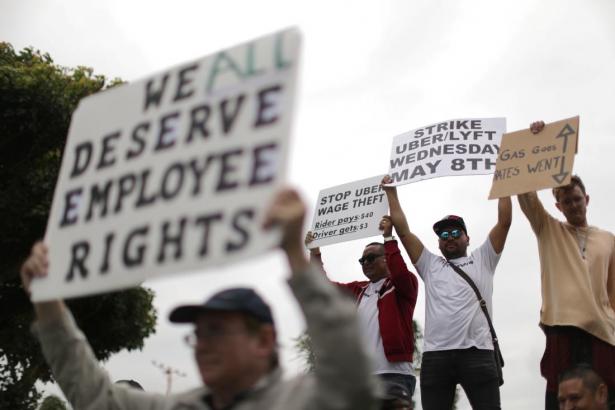Earlier this week, the US National Labor Relations Board (NLRB) released an April 16 memo that says Uber drivers are independent contractors, not employees, under US labor law. The decision, hardly surprising under a Trump-appointed NLRB, makes it even less likely that Uber drivers in the US will ever see certain protections afforded to traditional employees, such a guaranteed minimum wage and the right to form a union, recognized at the national level. But the future for Uber drivers won’t be decided by the US federal government.
The NLRB decision relied on a ruling from January that found shuttle van drivers for company SuperShuttle to be independent contractors, not employees, and stripped them of the right to unionize. As we wrote in Quartz at the time:
This case is not about Uber, and yet it is entirely about Uber. SuperShuttle’s business model is a shabby, low-tech version of Uber. The company enlists shuttle drivers who own their vehicles and pay their on-the-job expenses. It provides them with a dispatch system to receive ride requests. The thesis on which the labor board based its decision—that SuperShuttle drivers are not employees because they “have total autonomy to set their own work schedule”—could easily have been penned by Uber.
In its April 16 memo, the NLRB wrote that “the level of company control should be assessed in the context of its effect on entrepreneurial opportunity.” The board made a similar observation in the SuperShuttle case.
The board concludes that because Uber lets drivers set their own schedules, choose where they log into the app, and work for competitors, the company offers them “significant opportunities for economic gain and, ultimately, entrepreneurial independence”:
The Board’s recent decision in SuperShuttle squarely supports the conclusion that the extent of company control—by minimally impacting economic and entrepreneurial opportunity—weighs in favor of independent-contractor status for the UberX drivers. Indeed, UberX drivers had more entrepreneurial opportunity than the drivers in SuperShuttle, who could control their earnings by selecting specific trips based on profitability, because UberX drivers could base decisions about where and when to log in on time-limited earnings opportunities like “surge” fares and their total freedom to work for competitors.
Of course, you could argue there are lots of things Uber drivers don’t have control over. Most contractors set their own rates, but Uber drivers earn whatever Uber decides to pay them. Drivers have only so much visibility into where a trip will take them before accepting it, limiting their ability to plan a route around things like errands or commuting. Drivers spend years building ratings-based reputations on platforms like Uber, but can’t easily port them to other jobs or gigs as you might list experience on a resume. And Uber can “deactivate”—gig-economy speak for fire—drivers who don’t meet certain expectations.
The NLRB ruling is a blow to people who believe Uber drivers are wrongly classified as contractors. But for practical purposes, it seems unlikely to change much. Uber drivers have functionally been independent contractors since the company started, in that Uber treated them that way and so they’ve always operated without any of the benefits afforded to traditional employees. One question is what will come of legislation passed by the city of Seattle in December 2015 that gave local Uber drivers the right to form a union. That law has now been tied up in litigation for years.
More to the point, by far the best advances in working conditions for Uber drivers to date have come not from any sort of national lawsuit or legislation, but from concerted local pressure. In New York City, for instance, the city council last December approved a first-of-its-kind wage floor for ride-hail drivers. The pay rules that took effect in February raised take-home pay for drivers to $17.22 an hour, or the contractor equivalent of the city’s $15-an-hour minimum wage. They are expected to lift average incomes by $10,000, or 44%, for roughly 70,000 professional ride-hail drivers in the city.
New York City is only one place, but it’s also one of Uber’s biggest markets, meaning these rules are not inconsequential. The company disclosed in a recent IPO filing that the pay rules are already hurting its financial performance. Now that New York has hammered out a framework for bettering the lot of ride-hail drivers, it will also be easier for other cities to follow.
On the other side of the US, California legislators are working to codify an employment-status test that makes it harder to argue workers are contractors. The so-called ABC test says workers are employees if the company controls what they do, if their jobs are essential to the company’s core business, and if they aren’t really running their own business through that gig. The ABC test could potentially cripple the business model of many gig-economy companies, which depend on large, diffuse networks of contractors to provide services and deliver goods at the touch of a button.


Spread the word